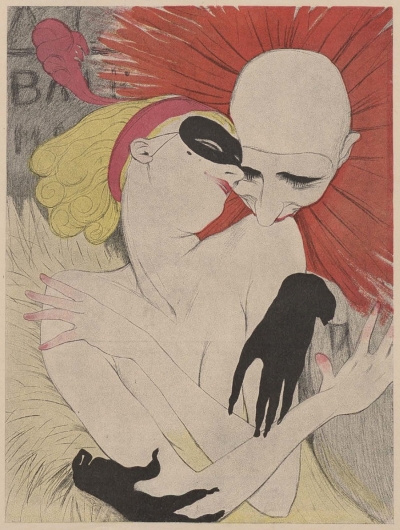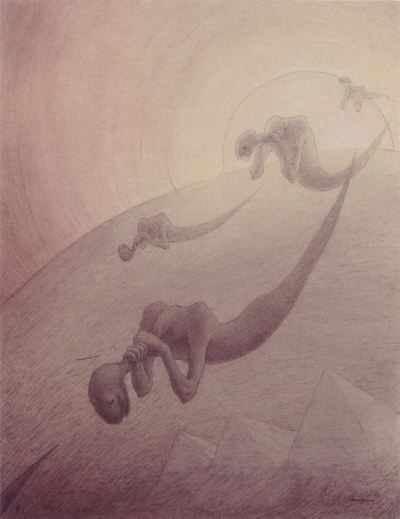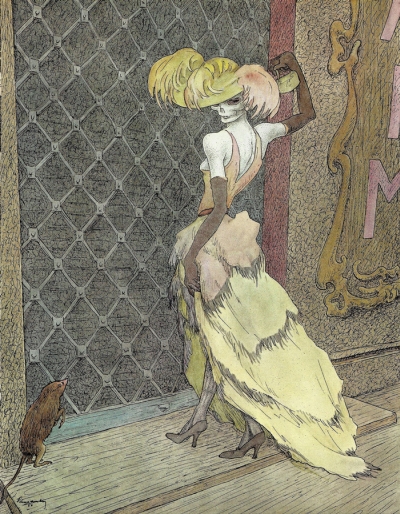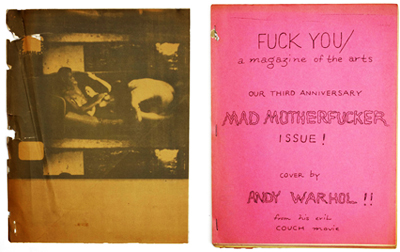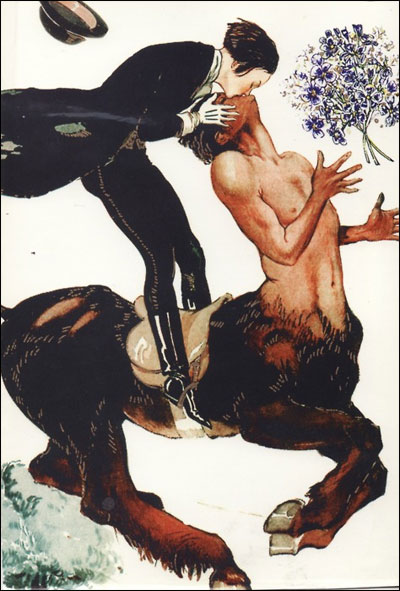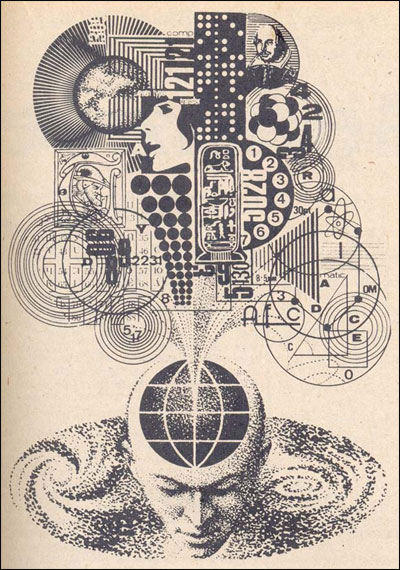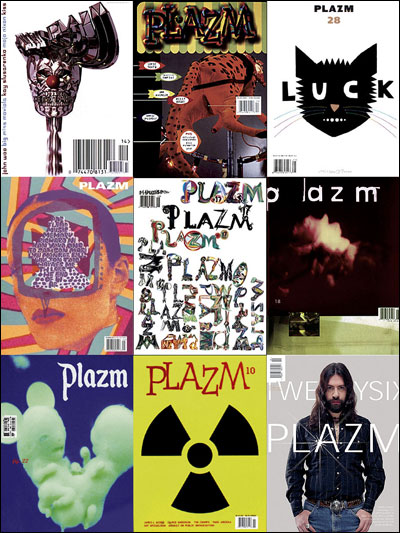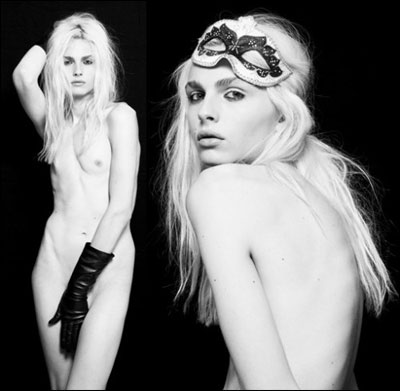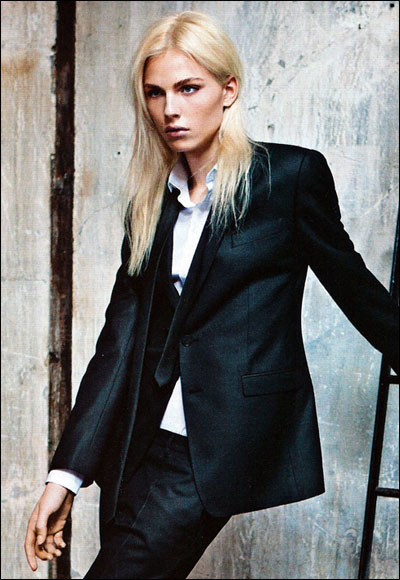Well, smack our heinies as we howl, folks, because after the most agonizingly laborious year imaginable, our beloved, beleaguered Coilbaby, print magazine Issue SixSixSix, has finally been born! It is now available in our shop. Big ups to everyone who helped ensure that this remarkable Lithopedion progeny of ours could finally come to pass, so to speak.
Join the black and white and red parade as we march through an angular Constructivist/Futurist/Expressionist landscape where originality and oddity rule. There are interviews with the ultra well-known and loved, and with the scrumptiously subterranean. There are (literally) sharp and edgy fashion editorials; there’s a never-before-published Bauhuas-era play; there are origami revelations. You’ll view tons of exclusive, made-just-for-the-magazine content contributed by all manner of wondrous human beings. At 113 pages, Issue 06 is substantially longer, bigger and thicker (hurr!) than any previous incarnation of the print mag. Let’s take another look at that die-cut cover, designed by our brilliant art star, Coilhouse Creative Director Courtney Riot:

The design of this issue was heavily influenced by Constructivism, Bauhaus, and De Stijl. We carefully researched the work of Piet Zwart, Jan Tschichold, and El Lissitzky in order to give Issue 06 its distinct look. We were especially inspired, in places, by Merz Magazine, published between 1923 and 1932 in Germany.
With Issue 06 being our biggest to date, it was a good time to bring aboard a talented new designer to help out. Please welcome Coilhouse Art Director Paulina Macfarland! Paulina is a designer, artist, LGBTQ activist, and a magazine publisher in her own right. She and Courtney divided up the articles evenly, working closely together to produce our most complex issue yet.

You can already find “Oblique Stratosphere” in select stores across North America, where it’s selling for $12.99 on the rack. (We’ll post a comprehensive list of locations ASAP.) And as of this afternoon, while supplies last, you can buy it directly through our store. (We especially encourage our international readers to purchase in this way; even with the shipping cost, that’s still cheaper than those crazy overseas store mark-ups.) Just remember, our online stock is relatively small and issues always sell out, so don’t delay. Once again, we’re keeping the $15 price tag on all copies sold online. As with our previous issue, those who order #06 through the web store will get additional bang for their extra bucks – download codes to archival riot grrrl materials from Kathleen Hanna’s personal collection, an exclusive Coilhouse-presented/Purebred-produced music video featuring the world-renowned belly dancer, Rachel Brice, and one-of-a-kind DIY schematics by origami artist Robert Lang. When you order through the site, access to these additional goods will be delivered to your PayPal email addy within 24 hours of ordering. Additionally, while supplies last, our readers will have option to buy into the following deluxe package:
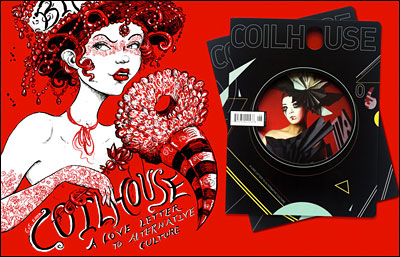
Coilhouse Issue 06 + Molly Crabapple’s Commemorative Coilhouse Birthday Serigraph: $75
It was our 4th birthday last August, and we were in the midst of a fundraising frenzy when our dear friend Molly Crabapple offered up this scintillating serigraph to aid our efforts. It was designed to dovetail aesthetically with our Black & White & Red All Over Ball, the theme of which, in turn, was directly inspired by the palette of Issue 06. We currently have 20 of these incredible collector’s items left in stock. They compliment Issue 06 perfectly. Molly Crabapple’s Commemorative Coilhouse Birthday Serigraph is 19″ x 25″, printed in matte red and semi-gloss black ink onto smooth 100+ paper stock from the deliciously-designed French Paper, with a thick border of white paper to frame the print. It’s a super high quality product with a tiny edition size, and we’re now offering it together with Issue 06 at an astoundingly low price. For those of you who can afford to, and are moved to, here is a wonderful opportunity to support our labor of love a wee bit extra, and receive a loving memento in return.
For so many of us, this has been a long, tough year… and it ain’t over ’til the Klaus Nomi sings. Thanks so much for bearing with us, comrades. Thank you for continuing to support this passionate, playful love letter to alternative culture. Thanks for taking part with us in sustaining what has become a global community of deeply creative and kindhearted kindred spirits. We hope you like Issue 06, that it was worth the wait, and that our next offering won’t be nearly so long in the making.
We salute you.

INFORM illustration by Zoetica Ebb
As with previous issues, Coilhouse 06 is divided into three sections: INFORM, INSPIRE and INFECT. For each section, Zoetica created original art inspired by the main themes of this issue. The graceful INFORM illustration features a sharp female robot who may very well be a cousin of Maria from Metropolis.
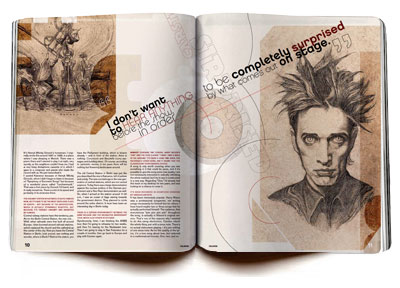
Blixa Bargeld
On the Outer Edges of Sense
A leather-clad prophet of the apocalypse, a cosmopolitan polymath, and an experimental music veteran whose infamous shriek has been compared by friend and colleague Nick Cave to “the sound of strangled cats and dying children,” Blixa Bargeld is being heard across two continents this fall, as his Berlin-based industrial band Einstürzende Neubauten celebrates their thirtieth anniversary as a band with a tour. Back in the 80s, E.N. used to set the stage on fire (literally), drill holes in walls and floors of the venues they played in, and maneuver burning oil and shopping carts to create a musical frame for their ferocious urban rituals. These days, complex structures built of metal barrels and jet turbines become sophisticated musical instruments rather than machines of doom. Earlier this year, Bargeld graciously granted Coilhouse correspondent Olga Drenda an in-depth interview. The article is illustrated with several stunning original drawings by Paul Komoda.

Transformers
Eva Nyiri / Clayton James Cubitt / Flaviana Matata
Inspired by “ancient samurai armor and today’s shiny Transformer-type robots,” Eva Nyiri crafted the Transformers collection with a primary goal: rethinking the traditional woman’s jacket. Brooklyn, Budapest, and the Shinyanga region of Tanzania collide in this collaboration between Nyiri, photographer Clayton James Cubitt, model Flaviana Matata, and makeup artist Katie Wedlund.
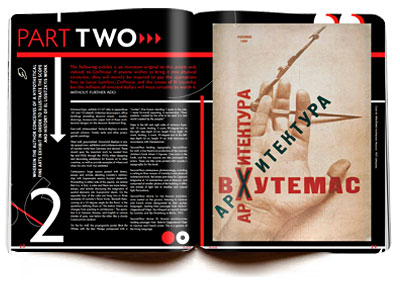
El Lissitzky
Naughty Squares, Musuem Maps, and Commie Propaganda ; A Looming Pedagogical Portrait
1920s Soviet artist El Lissitzky has been with Coilhouse since the very beginning. Samples from his famous self-portrait, The Constructor, serve as the page background for this site. The art movement that Lissitzky was involved in, Constructivism, greatly influenced every aspect of this issue. In this article, artist/performer Lucas Lanthier presents an informative biography, imagining a fanciful exhibit to illustrate the scope of Lissitzky’s work, and treating readers to lessons learned from the life and work of the artist in a cheeky propaganda slogan format.
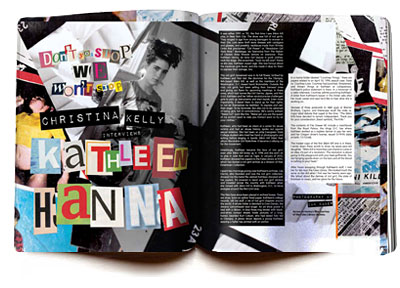
Kathleen Hanna
Don’t You Stop, We Won’t Stop
Kathleen Hanna of Bikini Kill is considered one of the founders of the riot grrrl movement. She recently donated her archive (early ‘zines, hand-written lyrics, guitar tabs, contact sheets, and artwork) to the Fales archive in New York. Coilhouse was granted unprecedented access to Hanna’s archive, various facets of which are presented in this article in a frenetic collage format. Kathleen sat down with journalist Christina Kelly – best known for her acclaimed editorial role at Sassy, the legendary ‘90s teen magazine – to discuss music, feminism, and personal history.
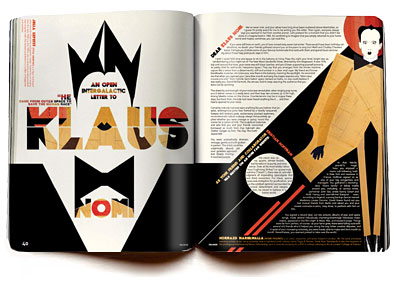
Klaus Nomi
He Came From Outer Space to Save the Human Race
A tenderhearted open intergalactic letter penned to and about the iconic, eccentric, and tragically short-lived singer Klaus Nomi. Written by Meredith Yayanos and featuring the puppet-like pattern collage art of Hormazd Narielwalla, with auxiliary graphic design by Julia LePetit.
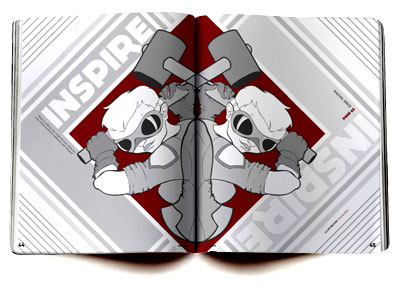
INFORM illustration by Zoetica Ebb
Zo’s robust INSPIRE illustration takes a cue from Soviet propaganda art, features a goggled revolutionary, cheerfully wielding a giant hammer.
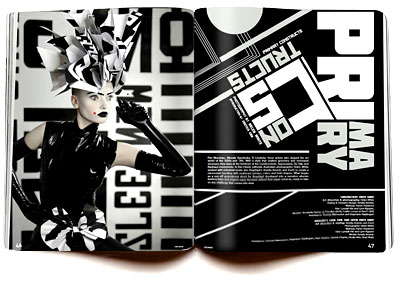
Primary Constructs
Fashion Editorial by Helen White, Amelia Arsenic, Zoog
Piet Mondrian, Wassily Kandinsky, El Lissitzky: three artists who shaped the art world of the 1920s and ’30s. With a style that exalted geometry and venerated structure, they were at the forefront of the Constructivist, Suprematist, De Stijl, and Bauhaus movements. In this tribute editorial, Australian photographer Helen White worked with industrial music duo Angelspit’s Amelia Arsenic and ZooG to create a microcosm bursting with exuberant primary colors and bold shapes. What began as a one-off promotional shoot for Angelspit developed into a narrative wherein fearless latex and origami super-heroines defend their paper universe, ready to take on any challenge that comes into view.

Paul Pope
Reinventing the Wheel
Comics creator Paul Pope reinvented the Batman mythos with a fierce cyberpunk critique of dystopian society in Batman: Year 100, and his speculative fiction epic, 100%, quickly became known as a modern masterwork. He has collaborated with the fashion brands Diesel and DKNY. His sporadically released sci-fi adventure story, THB, first published in 1995, continues to evolve and to astound. The 2007 PulpHope retrospective monograph covers every aspect of his work so far; intriguing women, strange machines, enigmatic castaways, and sprawling metropolitan vistas merge into a mystifying art colossus. Late last year, Pope hung out in a NYC bar with writer Ales Kot and a bottle of wine to discuss, among other things, art, music, empathy, and dreams.

Rachel Brice
Time Is On Her Side
Although she’s one of the most accomplished and well-traveled performers in her field, Rachel Brice describes herself simply: “I belly dance. I collect old junk. I am in love.” Aficionados have nicknamed her The Snake Charmer. World-renowned for her innovations in a dance form called Tribal Fusion, Brice has indeed mastered serpentine arm work, along with gravity-defying backbends and astounding abdominal muscle control – all markers of the indomitable substance beneath her fine-tuned aesthetic. Last year, on a rainy green evening in Portland, Oregon, Brice welcomed Meredith Yayanos into her home for a warm and candid conversation about belly dance, joy, and self-acceptance. Our cohorts Jason Mitchell and Stacey Ransom of Purebred Productions shot incredible Coilhouse exclusive photographs and video for this feature, building an entire set around the aesthetics of Issue Six for Brice to inhabit. Here’s a sneak peek of the music video (available in full as a digital download to everyone who buys through the web store).
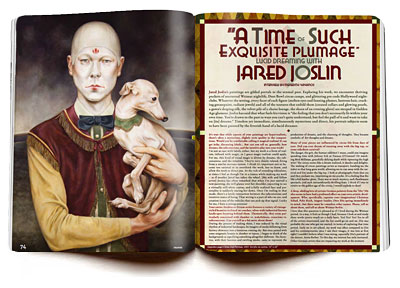
Jared Joslin
A Time of Such Exquisite Plumage
Jared Joslin’s paintings are gilded portals to the sensual past. Exploring his work, we encounter thriving pockets of nocturnal Weimar nightlife, Dust Bowl era carnivals, and glittering pre-code Hollywood nightclubs. Joslin has said that what fuels his vision is “the feeling that you don’t necessarily fit within your own time. You’re drawn to the past in ways you can’t quite understand, but feel the pull of it and want to take on [its] dreams.” His creations truly do seem timeless, and they are dreamy indeed, but his fascinating answers to Mer’s queries about his artistic process convey a sharp and lucid intelligence.
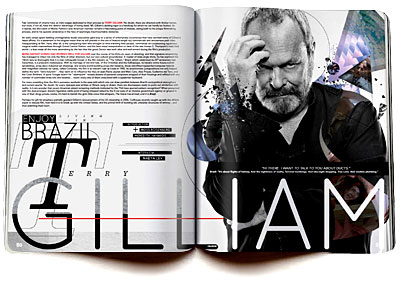
Terry Gilliam
Enjoy Living In Brazil
Few luminaries of cinema have as many pages dedicated to their process as Terry Gilliam. No doubt, there are directors with thicker tomes, but most, if not all, have the distinct advantage of being dead. Mr. Gilliam’s abiding vigor is a handicap for which he can hardly be faulted! As it stands, the life’s work of Monty Python’s sole American member remains a fascinating point of interest, owing both to his unique filmmaking process, and to his quixotic endurance in the face of seemingly insurmountable obstacles. A few months back, Nadya Lev caught up with the affable expat to discuss film, how hard it is to break up with the United States, and the primal thrill of building tall, unwieldy structures of whimsy… and then watching them burn.
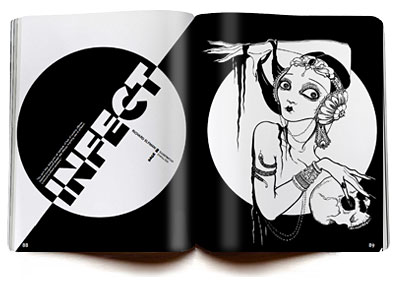
INFECT illustration by Zoetica Ebb
Zoetica’s starkly elegant INFECT illustration features a witchy German Expressionist siren of the silver screen.

Richard Elfman & the Mystic Knights of the Oingo Boingo
Brave Adventures in The Forbidden Zone
In cahoots with a gang of fellow creative abnormals – most conspicuously his little brother Danny – director Richard Elfman and the Mystic Knights of the Oingo Boingo presented demented, biting satire from the Hollyweird footlights from 1972 through the early eighties. Their gleeful shtick took cues from (and liberties with) Max Fleischer cartoons, German Expressionism, the Three Stooges, Cab Calloway, Frank Zappa, Spike Jones, various flapper and vaudeville legends, and the like. Presenting Gong Show-winning performances that combined old-timey traditions with more sharply modern slapstick, they were equal opportunity destroyers of taboo. Even from an outréphile’s standpoint, in subterranean sects where just about anything went, their antics dropped a lot of jaws. And that was before they made their “WHAT IS THAT I DON’T EVEN” opus, The Forbidden Zone. This feature is about that movie, and the (Elf)man(s) who made it happen. Written by Meredith Yayanos.
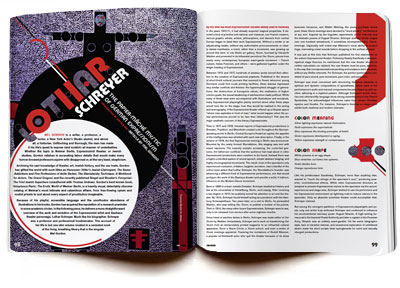
Lothar Schreyer
The Paper Mache Mystic of German Expressionism
We are honored to publish this feature on the intriguing Expressionist artist and Bauhaus theater personage, Lothar Schreyer, written by the incomparable Mel Gordon– a writer, a professor, a lector, a New York Actor’s Studio alumni, a historian, and author of the books Voluptuous Panic: The Erotic World of Weimar Berlin, The Seven Addictions and Five Professions of Anita Berber, The Grand Guignol, and Hanussen: Hitler’s Jewish Clairvoyant, among others. Unflinching and thorough, with a dizzying knowledge of theatre, art, Jewish history, and the sex trade, Gordon has made it his life’s quest to expose (and scratch) all manner of underbellies. Much like his biographer, Schreyer was a professor and professional troublemaker possessed of feverish vision and intelligence. The feature includes a short, never-before-published play of Schreyer’s, translated into English by Gordon.
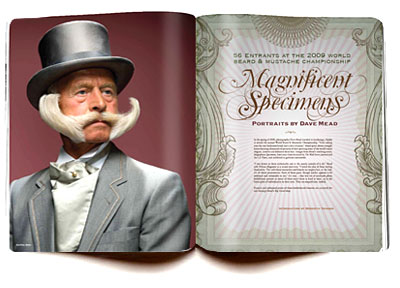
Magnificent Specimens
56 Entrants at the 2009 World Beard & Mustache Championship
In the spring of 2009, photographer Dave Mead traveled to Anchorage, Alaska to attend the annual World Beard & Mustache Championship. “Only taking time for one bathroom break and a slice of pizza,” Mead spent eleven straight hours shooting thousands of pictures of men sporting some of the world’s most elegant, creative and elaborate facial hair. These unique and wonderfully expressive men captured by Mead’s lense are magnificent indeed.

Print to Fit: Robert Lang’s Origami
Hex Twist Resch Bump Tessellation
Rather than closing the issue with paper dolls, we’ve decided to close it in the spirit of Issue 06’s angular, architectural style: with a custom origami folding pattern created for Coilhouse by one of the most renowned origami artists of our time, Robert Lang. Robert Lang’s work sits at the intersection of mathematics, origami, and science. A former NASA engineer and physicist with over forty patents, Lang can transform an uncut sheet of paper into an impossibly complex three-dimensional shape: a scorpion, a pond turtle, a rock climber, a Black Forest cuckoo clock. In lieu of paper dolls, and closely in keeping with Coilhouse Issue 06’s angular, geometric theme, Robert Lang has specially crafted a piece known in the genre of abstract origami as a tessellation: a repeating set of folded pleats and twists.


